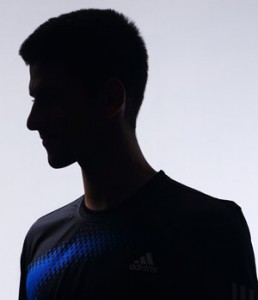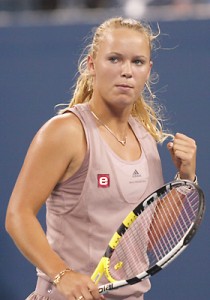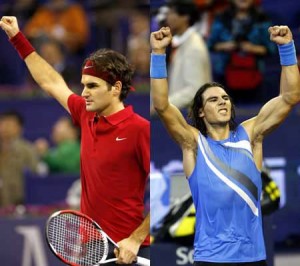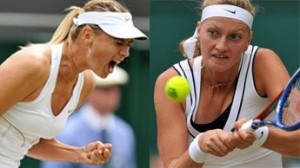Playing the Tennis Rankings Game: Reviewing the Top 10 in 2011…
What a difference a year makes. Nothing brings that point home more than looking back at the men’s and women’s tennis rankings at the end of 2010—and comparing it to today’s ranking.
For the last two years, the ladies’ rankings were as follows:
2010
- Caroline Wozniacki
- Vera Zvonareva
- Kim Clijsters
- Serena Williams
- Venus Williams
- Samantha Stosur
- Francesca Schiavone
- Jelena Jankovic
- Elena Dementieva
- Victoria Azarenka
2011
- Caroline Wozniacki
- Petra Kvitova
- Victoria Azarenka
- Maria Sharapova
- Na Li
- Samantha Stosur
- Vera Zvonareva
- Agnieszka Radwanska
- Marion Bartoli
- Andrea Petkovic
Only four of the WTA top ten ranked women at end of 2010 appear again in the top ten in 2011 after the ladies concluded their battle for the 2011 WTA championship.
Many of the perennial “standards” have faded from sight with no Williams sisters or Kim Clijsters making the cut.
For the men, the story is a bit different. While the ATP top ten ranked players at the end of 2010 had a different order, most of the names are the same in 2011—now, as the final three men struggle to make the ATP elite eight field for the 2011 year-end championship.
Only players ranked eight through ten have changed for the men. Otherwise, the men’s top seven from 2010 remained intact—just slightly re-ordered.
2010
- Rafael Nadal
- Roger Federer
- Novak Djokovic
- Andy Murray
- Robin Soderling
- Tomas Berdych
- David Ferrer
- Andy Roddick
- Fernando Verdasco
- Mikhail Youzhny
2011
- Novak Djokovic
- Rafael Nadal
- Andy Murray
- Roger Federer
- David Ferrer
- Robin Soderling
- Tomas Berdych
- Jo-Wilfried Tsonga
- Mardy Fish
- Gael Monfils
![]() So what do these year-end rankings snapshots tell us?
So what do these year-end rankings snapshots tell us?
More Turbulence in the WTA
Of the four women who carried over from the 2010 WTA top ten, Vera Zvonareva is 27 years of age while Caroline Wozniacki is 21, Victoria Azarenka is 22 and Samantha Stosur is 27. Only Stosur has has won a major.
The other three, including No. 1 ranked Wozniacki, are still waiting to take home that elusive first grand slam title.
The new comers to the top ten in 2011 are — Maria Sharapova, age 24, Petra Kvitova, 21, Na Li, 29, Agnieszka Radwanska, 22, Marion Bartoli, 27 and Andrea Petkovic, age 24.
The top ten overall average age for the ladies is 24.4—with no teenagers and no woman over 30.
Maria Sharapova, of course, has won three grand slam titles—but none since her shoulder surgery in 2008 and subsequent return to action in 2009. Li Na won her first major at the 2011 French Open and Petra Kvitova captured the 2011 Wimbledon title. Samantha Stosur finally won her first major at the 2011 US Open—defeating Serena Williams in the process.
The established top players like Serena Williams, Venus Williams and Kim Clijsters have been missing in action—through illness and/or injury for the greater part of 2011. Their absence in the finals of most grand slam tournaments has opened the door for others to finally find their way into the winners circle—like veterans Li Na and Stosur and newcomers like Kvitova.
Players prominent even three years ago such as Jelena Jankovic, Ana Ivanovic, Elena Dementieva, Dinara Safina, Svetlana Kuznetsova and Justine Henin have seen their rankings plummet—or else, the ladies have left the game altogether.
Realistically speaking, Serena Williams may return to action as will Belgian Kim Clijsters. These superstars, however, may not be around that much longer with Clijsters at age 28 and Serena Williams at age 30. The women are pulled in new directions—with family and professional decisions inevitably achieving priority over tennis at this stage in their careers.
In the meantime, a new generation of tennis players is determined to carve out its own niche in WTA history. Germans like Andrea Petkovic, Sabine Lisicki, Julia Goerges, and Angelique Kerber are making their presence felt much as the Russians did earlier in the post 2000 era.
Caroline Wozniacki, who has been ranked world No. 1 for over a year plays very consistent tennis but has made it to the finals of only one slam championship, the US Open in 2009. While tennis aficionados understand the complexities of ranking points, the general public remains unforgiving. “How can Wozniacki be ranked No. 1 when she has not won a slam?” continues to be the mantra the Dane endures in press conferences heard round the world.
This transition in the women’s game is not new—it just feels that way to those accustomed to seeing Justin Henin, Serena Williams, Kim Clijsters and Venus Williams taking home the majority of the slam trophies.
In the next year or two, the player or players who will dominate the tour will make their presence known. Until then, chaos will reign in the WTA.
Major Power Shift in the ATP
The story painted by the men’s rankings is different. The average age of the men in the top 10 is 26.5 with the youngest, Djokovic and Murray, at age 24 and the oldest, Federer, at age 30. Mardy Fish and David Ferrer are not far behind at age 29.
But unlike the women, the men’s top seven are established and have been in the top ten for over a year. Of the top four, Federer, Nadal and Djokovic have won 29 of the last 32 grand slam titles. Since 2004, only Federer, Nadal or Djokovic have held the Number 1 ranking.
Stability is the order of the day in men’s tennis.
During the past eight years, Federer has won three of four grand slams three times—in 2004, 2006 and 2007. Nadal accomplished that feat in 2010 and Djokovic did the same in 2011.
In fact, since 2004, Federer was ranked in the top two until Djokovic surpassed him in the spring of 2011.
But most see Federer’s long era finally ending. As the former world No. 1 slips in the rankings, the press will begin to hound the Swiss about when he will call it quits and hang up his undersized racket forever.
That is how “most” see it. Federer fans, however, see the Swiss competing well for another four or five years—remaining in the top ten and being very competitive.
The real focus now centers on the rise of Novak Djokovic to the top spot in men’s tennis. Will his reign be a long one or will Murray finally win a major and continue his climb up the rankings ladder?
If this comes to pass, what about Rafael Nadal who was evicted from his number one perch by Djokovic? Will Nadal be able to reclaim his hard-fought No. 1 spot, sending Djokovic back down to earth in 2012?
As three of the top four meet in Basel, Federer’s home town tournament—starting October 31—the state of men’s tennis seems fairly secure.
Federer, Djokovic and Murray will do battle on the same court for the first time since the 2011 US Open.
The tournament might bring into focus the answer to some burning questions. For example, how will Murray, who has been hot of late, fare against the two men who beat him most often in slam finals—Federer and Djokovic?
The competition in Basel will be hot and heavy as Tomas Berdych and Mardy Fish hope to gain enough points to make the ATP final eight field for the Barclays WTF in London.
The tournament in Valencia will also provide intense action as Jo Wilfried Tsonga, Nicolas Almagro and Juan Martin del Potro also hope to capture enough points to seed them in the top eight in London.
Moving Forward in 2012:
In the WTA whole scale movement is the order of the day as established players slip and newer players rise.
This transitional period will, no doubt, exist for an extended period as a new order unfolds in the top ten in women’s tennis.
For the men, the shuffling and jousting for new positions on the rankings ladder appear to be the modus operandi for the ATP as the battle for No. 1 rages on.
The newer players trying to battle their way into the top ten seem be stuck in the teens and twenties while the top ten for the most part seems well established.
The real story for the men comes as the top four trade positions with Federer and Nadal fading and Djokovic and Murray on the rise—but for how long?
Rankings are only a snapshot at a given point on the calendar. Week by week you see little movement but over a year, you get a true picture of whose star is rising and whose is fading away…













